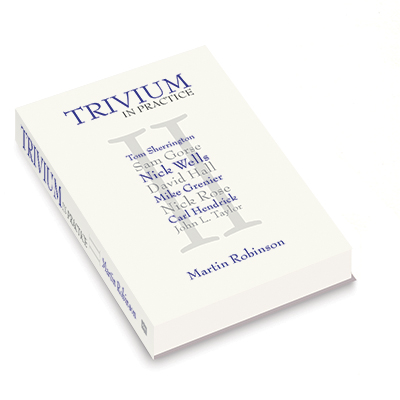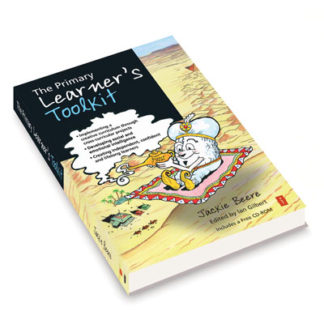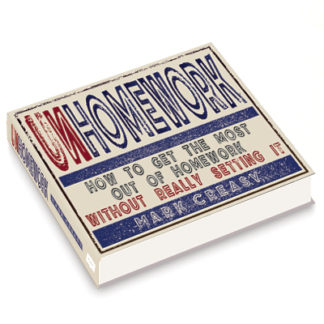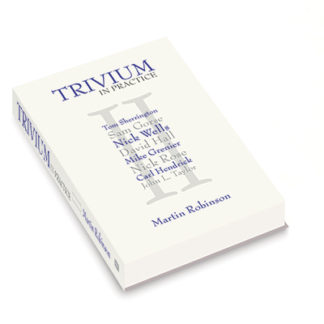Description
Trivium in Practice brings together a series of case studies written by educators who were inspired by Martin Robinson’s first book, Trivium 21c. Taken together, these case studies reveal how, regardless of setting or sector, the trivium can deliver a truly great education for our children.
Great teaching has the three elements of the trivium at its centre. Grammar: foundational knowledge and skills. Dialectic: questioning, thinking and practising. Rhetoric: the ability to express oneself beautifully, persuasively and articulately in any form.
The trivium is a helpful way for a teacher to think about the art of teaching. Through the model of the trivium traditional values and progressive ideals can coexist; both knowledge and cultural capital matter and skills are interwoven with content. The trivium isn’t a gimmick to be imposed on to a curriculum; it is a tried and tested approach to education. It is the key to great teaching and learning, as this group of educators discovered.
Tom Sherrington and a group of teachers from Highbury Grove School share examples of how they have used the trivium in English, maths, sociology and history, and detail how the trivium has helped them develop a whole school framework for teaching and learning, including a whole school approach to improving spoken English. Sam Gorse explains how the trivium has influenced curriculum planning at Turton School, discussing how it helped departments with differing pedagogical approaches to find common ground. The trivium has influenced them to rethink how they plan the curriculum and use the school space, creating zones where subjects can interact and influence each other. Nick Wells explains how his school used the trivium as a prism through which to view their continuing improvement. By using it to inform a mastery curriculum, he saw how it might help students to fly even higher than they have done in the past – not just in terms of their exam results, but also in terms of their understanding of, and ability to contribute to, the world around them. David Hall, Nigel Matthias and Nick Barnsley used the trivium as a framework to question what they really wanted education to be about a Bay House school. They discuss their approaches to curriculum planning and assessment, using their challenging new sixth form course and their Year 7 Developing Learning Programme as examples. Mike Grenier makes connections between the key tenets of the Slow Education movement and the evolving nature of the trivium: at the heart of both is a respect for the student–teacher relationship and a strong belief in the need for a balanced, yet challenging, curriculum. Nick Rose takes as his starting point the idea that we might be able to apply some of the principles of evolution through natural selection to the realm of culturally transmitted ideas. He gives a brief ‘natural history’ of education and examines how grammar, dialectic and rhetoric might be understood in light of the processes of inheritance, selection and variation which operate at the heart of evolutionary systems. Carl Hendrick explores how Mikhail Bakhtin’s ideas of ‘dialogic’, ‘carnival’ and ‘inauthenticity’ can inform classroom practice and support the broader ambition of the trivium.
These educators have found that trivium education has brought a range of tangible benefits for their students. These include: greater confidence, enhanced development of rigorous analytical skills, improved oracy and confidence in speaking in front of audiences, an appreciation of the value of acquiring and applying knowledge, refined skills in questioning and debating, developed creativity, independence and critical thinking, the ability to form and express considered opinions and, importantly, the enjoyment of learning. Fundamentally, these educators have found that the trivium has helped them to define and deliver their ideas about the education they want for their students, helping them to become engaged, lifelong learners in the process.
There is no one ‘right’ way to ‘do’ the trivium: it is a tradition that can be adapted. It is the art of education and engages teachers in the art of being educators. Just as each great artist learns from a tradition and refashions it, adds to it, disrupts it, so do the teachers who have contributed to this book. On their canvas, in their school, each contributor is creating and re-creating trivium education in their own way. Discover the potential of the trivium and be inspired to do the same in your own classroom.
Suitable for teachers and leaders in any educational setting.





